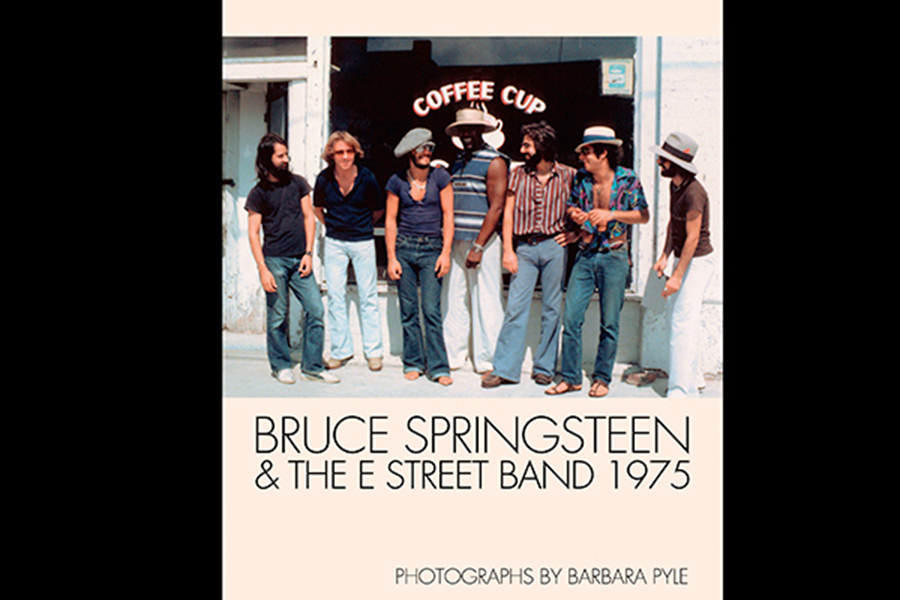'Bruce Springsteen and the E Street Band 1975' shows us the Boss as he was
Loading...
The legendary photographer Henri Cartier-Bresson sought to capture a “decisive moment” on film. A new book of previously unpublished photographs, Bruce Springsteen and the E Street Band 1975: Photographs by Barbara Pyle (Reel Art Press), does just that. “My gut instinct said there was something important about that unique moment in the lives of Bruce Springsteen and the E Street Band,” photojournalist Pyle explains in her book. “Photographing them was a hobby but then it became a mission.”
The decisive moment for Pyle was more like a decisive year, during which she had unrestricted access to the band’s recording sessions, rehearsals, performances, and leisure time on tour. What made the period a “dividing line” in his career, Springsteen has said, was that it capped 10 years of learning his chops as a rock-and-roll musician. It was a pivot-point of transition from aspiring to arrived.
When his breakthrough album, "Born to Run," was released in August of 1975, Springsteen vaulted from the obscurity of “Bruce-who?” to the frenzy of “Bruce-mania,” proclaimed as the poet laureate of his generation. Released 40 years ago, the groundbreaking album immediately entered the Top Ten in sales, with eventually six million records sold. By October 1975, Springsteen was on the cover of both Time and Newsweek.
Hailed as a working-man’s troubadour like Woody Guthrie and Pete Seeger, Springsteen has since had an illustrious career, selling more than 120 million albums world-wide. Grammy awards, an Academy Award for best movie theme song (“Streets of Philadelphia”), and admission to the Rock and Roll Hall of Fame are a few of his many accolades.
But 40 years ago Springsteen was no icon – just a 25-year-old singer-songwriter playing in ratty South Jersey clubs. In his newsboy hat, muscle-tee shirt, beaded necklace and sandals, he seems the quintessential scruffy, bohemian artist. You won’t find glamorous photos of Springsteen and the band staged with elaborate props and costumes à la Annie Leibovitz’s images. Pyle’s aesthetic sticks to the genre of rock photography defined by Alfred Wertheimer in his 1956 images of the 21-year-old Elvis Presley on the cusp of stardom. In style, Pyle’s gritty, grainy, black-and-white images are pure Street Photography: realistic, urban snapshots with a debt to 1950s pioneers like Walker Evans, Helen Levitt, Roy De Carava, and Robert Frank.
The images reflect no photo-shopped version of rock celebrity. Their intensity derives from the passion and pulse of the music and ferocious performance style of Springsteen himself. Dramatic, spotlit shots freeze into a tableau of raw energy his frenetic wheeling about like a pinball on-stage – leaping on the piano or wailing behind a microphone.
What makes this collection stand out is its honesty. You see the sweat-drenched work, ambition, and ceaseless striving behind the achievement. Springsteen was no overnight success; neither was he a lone hero. He was first promoted as a solo acoustic act in the vein of James Taylor or Joni Mitchell – a “new Dylan.” To realize his vision, Springsteen insisted on enlisting a Band of Brothers that became the E Street Band. Pyle too, was adamant that her book include band members to document the communal dynamics she saw.
"Born to Run" was a make-it-or-break-it album for Springsteen, since his first two albums had not sold well; Columbia Records was about to drop him. What comes through in Pyle’s photographs of 13-hour recording sessions is Springsteen’s perfectionism, pushing for just the right guitar riffs on “Thunder Road,” saying, “Again. Again. Again.” For 16 hours the brilliant saxophonist Clarence Clemens played one “Jungleland” solo, asking after each take, “That’s it, right, Bruce?” Springsteen’s response: “Play it again, one more time,” Pyle’s powerful pictures of them drooping in exhaustion show the labor behind the label of superstar.
The stark images of the band at work on the epic, operatic album mirror the driving rhythm of its lyrics and music. The title track of "Born to Run," sung in a full-tilt shout, seeks liberation from a dead-end life: “We gotta get out while we’re young/ ‘Cause tramps like us, baby we were born to run.”
Four decades later, Springsteen’s career and music enjoy remarkable longevity. “I believe that the life of a rock and roll band will last as long as you look down into the audience and can see yourself, and your audience looks up at you and can see themselves,” Springsteen has said, adding, “and as long as those reflections are human, realistic ones.” Pyle’s candid-camera photographs show the human, realistic Springsteen and his band.
When Barack Obama honored Springsteen with a Kennedy Center medal in 2009, he said, “I’m the President, but he’s the Boss.” Pyle’s photographs show the birth of the Boss at a decisive moment when American rock and roll gained a new voice, born to reign.
Carol Strickland is an art critic, author of 'The Annotated Mona Lisa: A Crash Course in Art History from Prehistoric to Post-Modern.' Her latest work is an enhanced eBook designed for the iPad called 'Impressionism: A Legacy of Light.'








